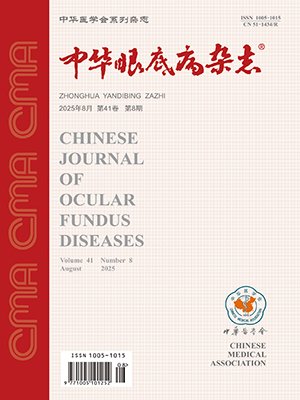Objective To detect expression of NF-κB in the inner retina and in vestigate the inhibitoryeffect of pyrrolidine dithiocarbamate on retinal neovascularization in rats. Methods The rat models with retinopathy were set up un der the hypoxia condition, and fluorescein fundus angiography (FFA) was used to observe the retinal neovascularization. The expressions of NF-κB in the inner retina in rats with and without neovascularization were detected by immunohisto chemical method. PDTC was intraperitoneally injected in rats with neovascularization to observe the expression of NF-κB in the inner retina and the effect on retinal neovascularization. Results Hypoxia induced NF-κB activation in the retinal glial cells and endothelial cells. But immuno-staining intensity for NF-κB and adhesion molecules were reduced by PDTC intraperitoneal injection. Retin al angiogenesis in rats were suppressed effectively (P<0.05). Conclusions NF-κB activation correlates with retinal neovascularization closely. PDTC may inhibit the NF-κB activation and prove beneficial in the treatment of ischemic neovascularization. (Chin J Ocul Fundus Dis,2003,19:201-268)
Citation: ZHOU Xiaohong,ZHANG Junjun,YAN Mi. Inhibitory effect of the pyrrolidine dithiocarbamate on retinal neovascularization in rats. Chinese Journal of Ocular Fundus Diseases, 2003, 19(4): 226-229. doi: Copy
Copyright © the editorial department of Chinese Journal of Ocular Fundus Diseases of West China Medical Publisher. All rights reserved




